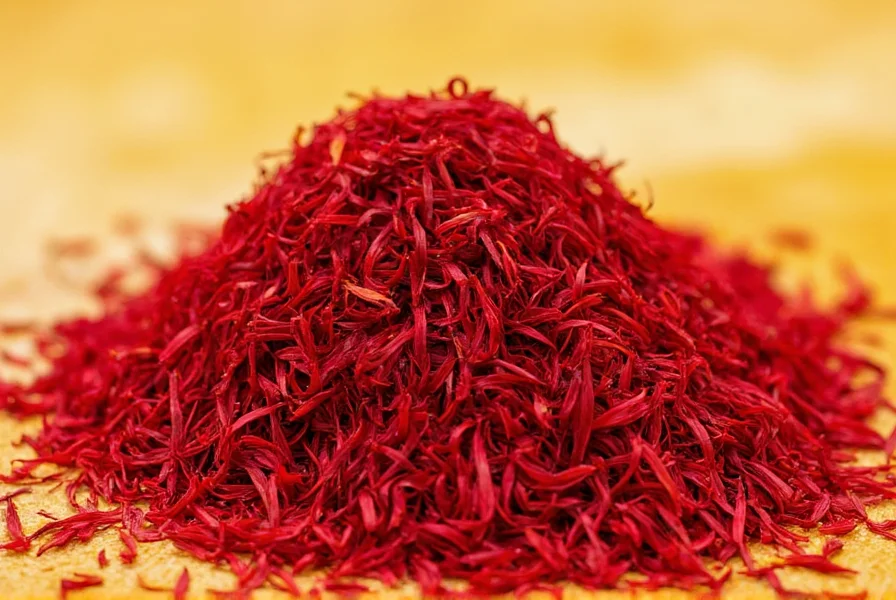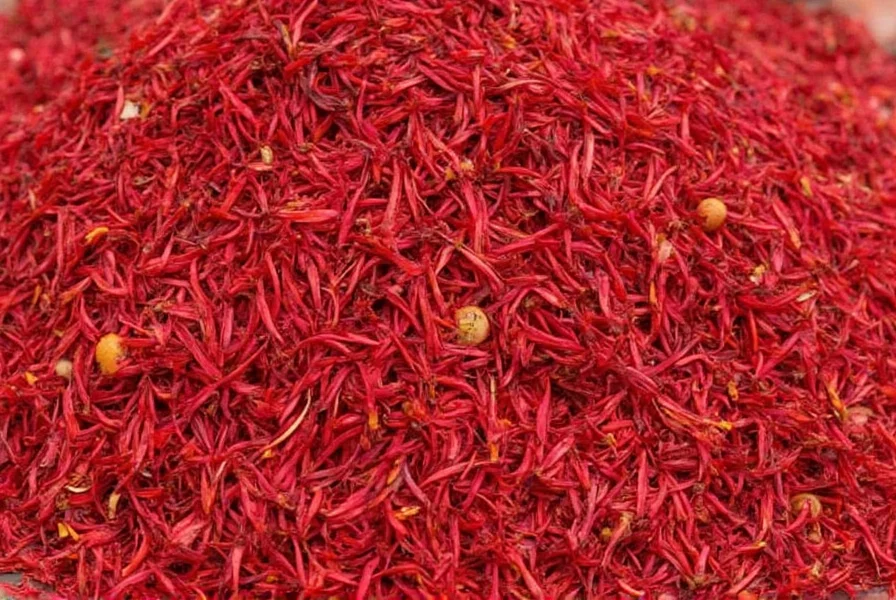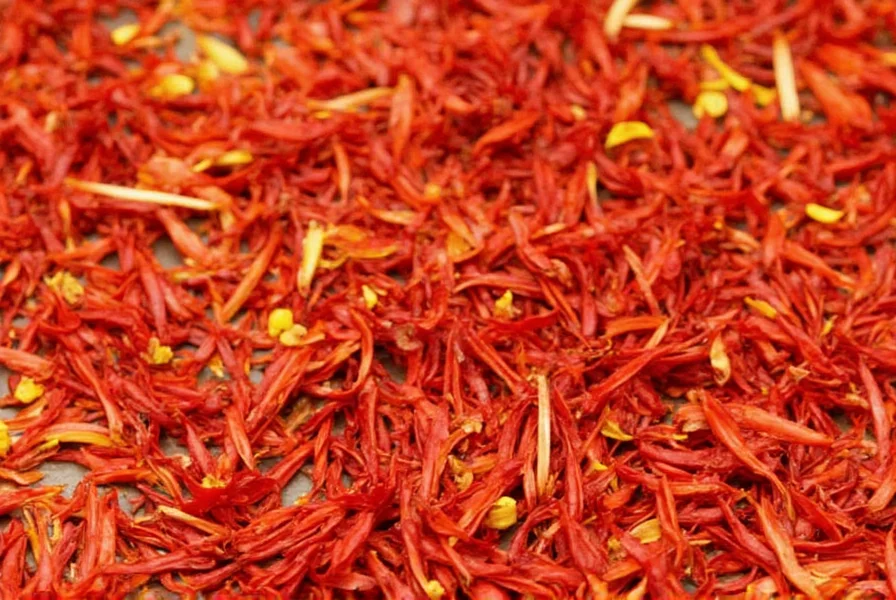The World's Most Expensive Spice: Understanding Saffron's Price
Saffron commands prices higher than gold by weight, with premium varieties reaching $5,000 per pound. This crimson spice isn't expensive due to rarity alone, but rather the meticulous human labor required at every stage of production. Unlike machine-harvested spices, saffron's value comes from the three fragile red stigmas within each Crocus sativus flower, which must be carefully extracted by hand during a narrow harvesting window.
The Labor-Intensive Harvesting Process
Saffron harvesting represents one of agriculture's most labor-demanding processes. Farmers must work at dawn when flowers are still closed to protect the delicate stigmas. Each flower yields just three threads, requiring workers to inspect and pick approximately 1,500 flowers to gather a single gram of dried saffron. This painstaking process continues for only 1-2 weeks each autumn when the crocus blooms.
During peak harvest season, workers often labor 12-hour days just to collect enough flowers. The timing proves critical—if harvesting occurs too early, the stigmas remain undeveloped; too late, and the flowers wilt, ruining the precious threads. This narrow harvesting window creates intense seasonal labor demands that significantly impact production costs.
Saffron Yield Compared to Other Spices
| Spice | Flowers Needed Per Pound | Harvest Method | Annual Global Production |
|---|---|---|---|
| Saffron | 750,000 | Hand-picked | 250-350 metric tons |
| Vanilla | 3,000 beans | Hand-pollinated | 8,000 metric tons |
| Safflower | N/A | Machine-harvested | 700,000 metric tons |
| Cinnamon | N/A | Hand-stripped bark | 280,000 metric tons |
Geographical Limitations and Climate Requirements
The Crocus sativus plant grows only in specific temperate climates with distinct seasonal patterns. Iran produces 90% of the world's saffron, with smaller quantities coming from Spain, India, and Greece. These regions provide the necessary combination of cold winters, hot dry summers, and well-drained soil that the delicate crocus requires.
Unlike many crops that thrive across multiple continents, saffron cultivation remains geographically constrained. Attempts to grow saffron outside traditional regions often fail due to improper climate conditions, limiting global supply. Each saffron crocus blooms for just one week annually, producing a single flower per bulb, which further restricts production capacity.

Quality Grading and Authentication Challenges
Saffron quality varies dramatically based on harvesting techniques and processing methods. The ISO 3632 standard classifies saffron into four quality grades based on crocin (color), picrocrocin (taste), and safranal (aroma) content. Higher-grade saffron commands premium prices due to superior coloring strength and flavor intensity.
Adulteration remains a significant industry challenge, with up to 50% of saffron products containing fillers like safflower or marigold. Authenticating genuine saffron requires laboratory testing, adding to production costs. Reputable producers implement strict quality controls and traceability systems, which further increases expenses but ensures consumers receive pure saffron.
Economic Factors Driving Saffron's Premium Price
The saffron market operates under classic supply and demand economics with severe supply constraints. While global demand grows approximately 5% annually due to culinary and potential health applications, production capacity remains limited by the labor-intensive nature of cultivation.
When calculating the true cost per serving, saffron becomes more reasonable—a single gram typically yields 30-40 servings in cooking. However, the upfront cost remains high due to the production realities. Unlike machine-harvested spices where technology reduces costs over time, saffron's hand-harvesting requirement prevents significant cost reductions despite technological advances in other agricultural sectors.

Is Premium Saffron Worth the Investment?
For culinary professionals and home cooks, authentic saffron delivers unmatched flavor and coloring properties that justify its cost in specific applications. A pinch transforms rice dishes, sauces, and baked goods with its distinctive aroma and golden hue. The key is understanding proper usage—too much creates bitterness, while too little provides no benefit.
When purchasing saffron, look for deep red threads with minimal yellow styles, uniform color, and airtight packaging. Lower-priced powders often indicate adulteration. While the initial cost seems high, the cost per serving makes premium saffron economically viable for special dishes where its unique properties shine.
Frequently Asked Questions
How many flowers are needed to make one teaspoon of saffron?
Approximately 60-70 crocus flowers yield one teaspoon (0.5 grams) of saffron threads. This represents about 180-210 individual stigmas carefully hand-picked and dried, explaining why even small quantities carry significant cost.
Why can't saffron be harvested by machines?
Saffron stigmas are too delicate for mechanical harvesting. The threads must be extracted by hand within a narrow timeframe before flowers open completely. Machine harvesting would damage the fragile stigmas or collect insufficient quantities, making the process economically unviable.
Does expensive saffron actually taste different from cheaper varieties?
Yes, premium saffron delivers significantly stronger flavor, aroma, and coloring properties. Higher-grade saffron contains more crocin (providing color), picrocrocin (providing taste), and safranal (providing aroma). Lower-priced products often contain fillers or inferior grades that lack saffron's distinctive characteristics.
How should I store saffron to maintain its quality and value?
Store saffron threads in an airtight container away from light, heat, and moisture. Properly stored saffron maintains potency for 2-3 years. Never store in refrigerator due to moisture risk. For extended storage, keep in freezer with desiccant packet. Whole threads retain quality longer than powdered saffron.











 浙公网安备
33010002000092号
浙公网安备
33010002000092号 浙B2-20120091-4
浙B2-20120091-4